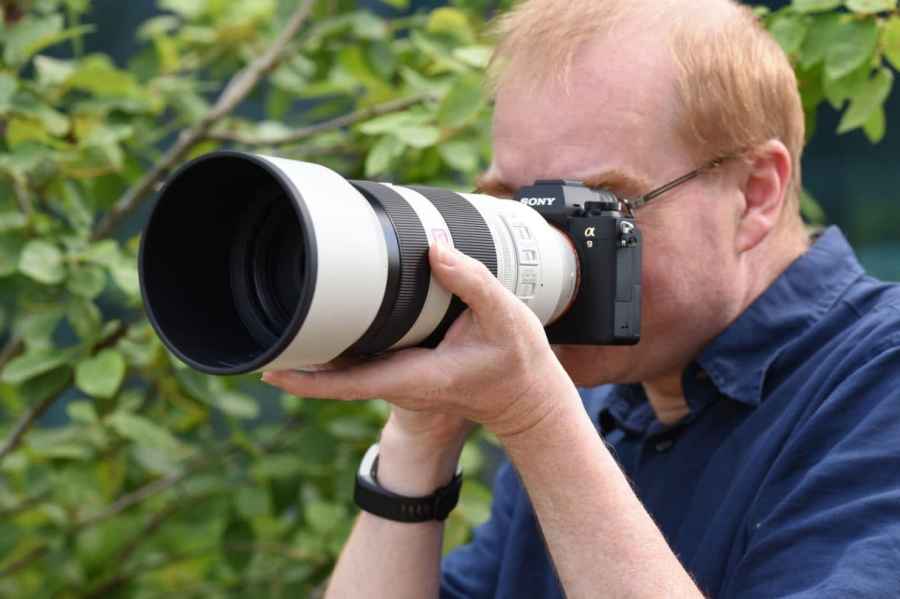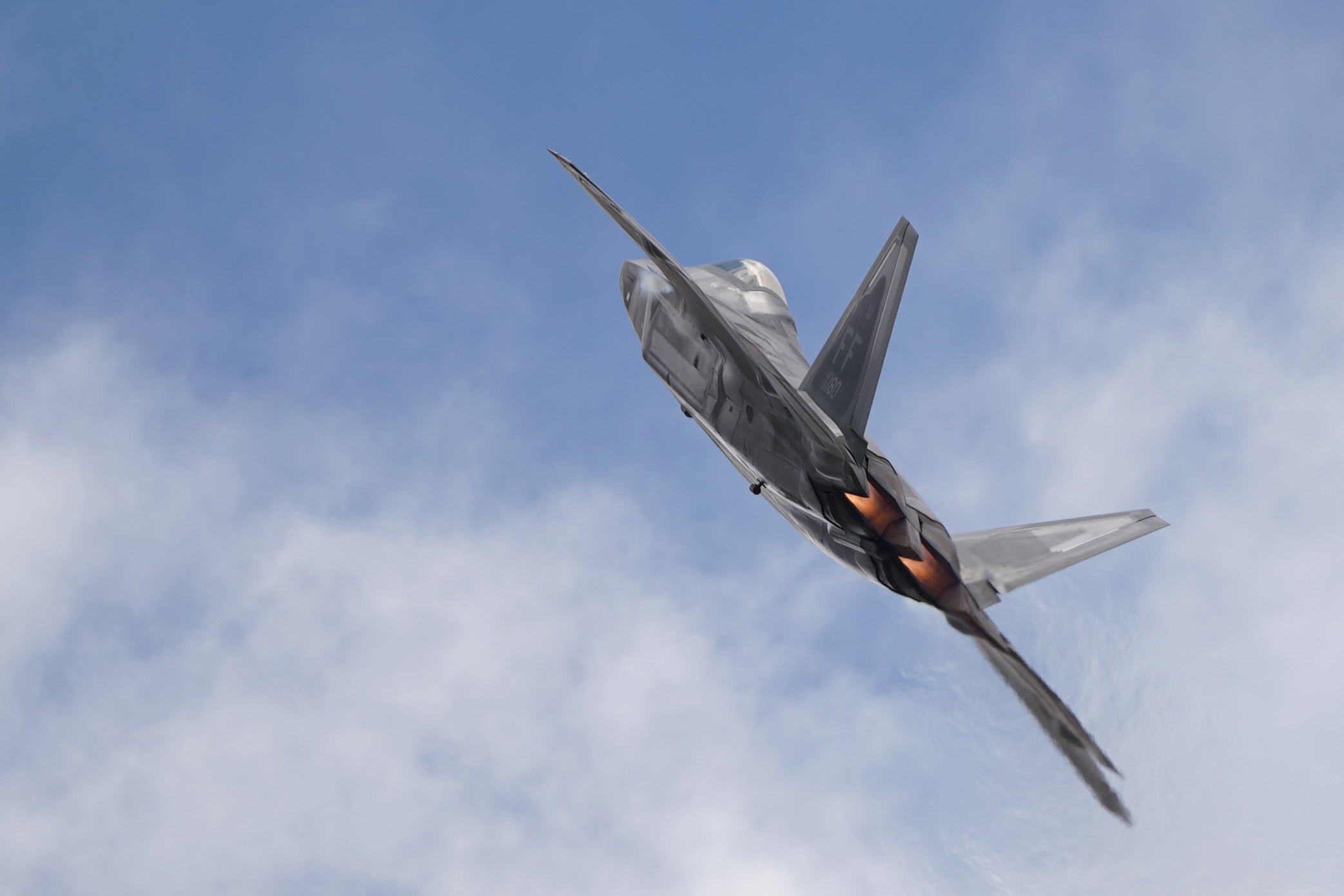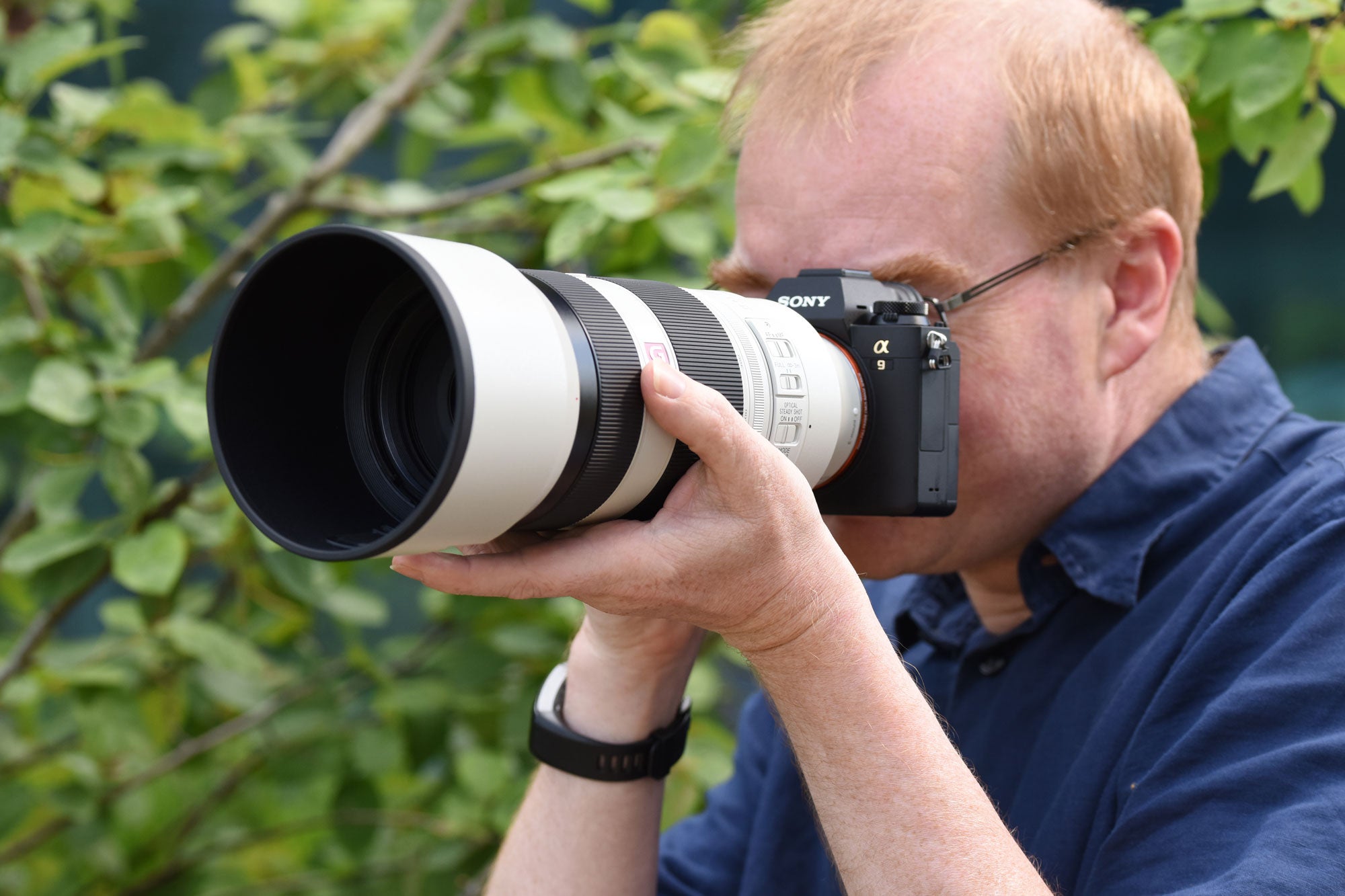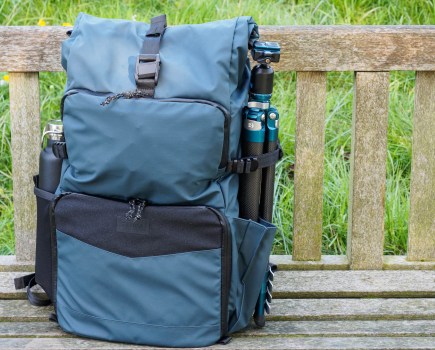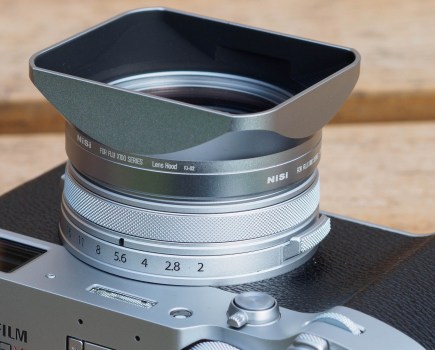What is the Sony FE 100-400mm f/4.5-5.6 GM OSS?
The Sony FE 100-400mm f/4.5-5.6 GM OSS is an optically stabilised long-telephoto zoom, designed to work with the firm’s full-frame E-mount mirrorless cameras. It costs £2500.
A few months ago, I managed to get my hands on one of the first samples of the Sony Alpha 9 – a full-frame mirrorless wonder that can shoot at 20 frames per second while adjusting autofocus and exposure between each frame. It was an impressive performer, but there was one thing missing – the ability to couple it with the kind of native FE-mount long-telephoto lens that sports and action shooters are likely to use.
Now the first such lens has arrived, in the shape of the Sony FE 100-400mm f/4.5-5.6 GM OSS. This is a relatively compact, lightweight optic that covers a handy telephoto range and is particularly well-matched to the Alpha 9 in terms of size and weight. It’s a member of Sony’s G Master family, which represents the company’s top-level optical designs.
But as we’ve come to expect from Sony, it doesn’t come cheap. The lens will set you back £2500, which is costly compared to Canon and Nikon’s equivalents, both of which are closer to £2000.
With a lens such as this, however, top-notch optics are only part of the story. If you’re shooting fast-moving action then it’s just as important that the lens can focus quickly and accurately, and that it handles well and can survive less-than-perfect weather conditions.
To find out whether this is the case, I put it to the test shooting fast jets at the Royal International Air Tattoo at Fairford, Gloucestershire. The images in this review are all camera JPEGs, cropped and with brightness and colour adjustments only.
Sony FE 100-400mm GM – Features
The FE 100-400mm GM is designed as a high-end telezoom for professional use, and it has all the features you’d expect of such a lens.
As befits its top-end G Master range, Sony hasn’t skimped on the glass. The optical formula comprises 22 elements in 16 groups, with two extra-low dispersion (ED) glass elements and one super-ED element employed to keep chromatic aberrations to a minimum. A nano AR coating suppresses internal reflections to minimise flare and ghosting, while a fluorine coating on the front element repels grease and water.
For close-up shooting, the lens has a minimum focus distance of 0.98m. This gives a maximum magnification of 0.35x, which counts as best-in-class by a whisker.

The lens is well matched to the Alpha 9 in terms of size and weight
Sony has built in its Optical SteadyShot image stabilisation, which provides conventional two-axis stabilisation with APS-C E-mount bodies or the first-generation Alpha 7 bodies that lack in-body systems. Mount it on a second-generation Alpha 7-series model, Alpha 9 or Alpha 6500, and the OSS works in concert with the camera’s in-body image stabilisation to provide five axes of correction. Sony claims that when used with the Alpha 9, it allows shutter speeds that are five stops slower than usual before blur from camera shake impacts your images.
Sony FE 100-400mm GM – Build and handling
On first taking the lens out of its packaging, it’s clear that build quality is every bit as good as you’d hope for at the price – and certainly a match for the Canon and Nikon equivalents. Sony has employed a magnesium-alloy barrel construction, with an array of seals to keep dust and moisture at bay. This includes one around the outside of the bayonet, which protects the vulnerable interface within the camera. While I was using it, the lens shrugged off a couple of heavy showers with no ill-effects whatsoever.

A rubber seal around the mount helps to keep dust and moisture at bay
The lens is reasonably compact and lightweight. It’s about 1cm longer than Sony’s Alpha mount equivalent, the 70-400mm f/4-5.6 G SSM II, and it’s over 100g lighter. Couple this with the much lighter weight of the Alpha 9 compared to top-end full-frame DSLRs, and you have a far more manoeuvrable combination. I was perfectly happy using it handheld throughout an eight-hour flying display.

Like other long telezooms, the lens extends on zooming
As usual, there are two main controls on the barrel in the shape of zoom and manual focus rings, along with an array of additional buttons and switches. The zoom ring rotates 90 degrees between the lens’ shortest 100mm position and its maximum extension at 400mm.
With a lens of this size and weight, twist-zooms aren’t necessarily great for making quick adjustments when shooting fast action, but I found that you can simply grasp the lens hood and use it as a push-pull zoom instead.
This is facilitated by a really neat feature: a rotary torque adjustment ring, which sits immediately behind the zoom ring. Set this to Smooth and you get quick adjustment ideal for push-pull operation, although there’s some tendency towards zoom creep – for instance, the lens extending under its own weight when pointed downwards. Adjusting the torque towards the Tight position eliminates this, but at the expense of making it more difficult to adjust your composition precisely.

A rotary control adjusts the torque of the zoom ring
At the front of the lens is a non-rotating 77mm thread for attaching filters, surrounded by a bayonet mount for the deep cylindrical lens hood. This is made of thick plastic, tipped with rubber to absorb knocks from inadvertent impacts; it has a locking button to hold it in place while shooting. There’s also a neat inset sliding door that can be used to adjust polarising filters from beneath the lens, without having to remove the hood or poke in your fingers from the front.

A cut-out in the hood allows easy adjustment of filters
Towards the back of the barrel is a collar that holds the tripod mount foot. It rotates smoothly, but there are no click-stops at the 90-degree marks for portrait and landscape positions. I particularly like the design of the tripod foot, which detaches from the collar by twisting a lever on its side then pressing a button on the front. This makes it quick and easy to remove the lens from a tripod, and you don’t need to find space in your bag for a bulky mount ring when you’re not using it. However, I’d have loved to see an Arca Swiss pattern quick-release shoe built-in to complement the twin 1/4in tripod screw sockets.

The tripod mount foot can be removed quickly and easily
Four switches adorn the left side of the barrel, with the top pair for focus and the others for image stabilisation. The AF/MF switch is joined by a smaller focus limiter that prevents the lens from hunting for subjects closer than 3 metres – useful when you’re shooting distant subjects. Below the Optical Steady Shot on/off switch is a mode selector, with Mode 1 for general use and Mode 2 for panning with moving subjects.

Four switches on the lens barrel control the autofocus and image stabilisation
Finally, three AF-stop buttons sit around the barrel at 90-degree intervals between the zoom and focus rings. These can be set to operate an array of different functions via the camera’s menu, including eye-tracking autofocus and depth-of-field preview.
Sony FE 100-400mm GM – Autofocus
With a telephoto zoom designed for shooting sports and action, fast and accurate autofocus is critical. Not just on static subjects, either; the lens has to be able to acquire focus quickly, then continuously adjust to track subjects moving towards or away from the camera.
To achieve this, Sony has included a complex AF system with one focus group driven by a double-linear motor, and a second by a Direct Drive Supersonic Motor (DDSSM). It works superbly.
Autofocus is super-quick, supremely accurate, and effectively silent – indeed, it’s so responsive that at times the lens feels like it isn’t actually doing anything at all.
I found it could lock onto the subject in a fraction of a second, and track fighter jets making high-speed passes towards or away from the camera, even giving consistently accurate focus with the subject an extended distance away. Focus tracking works happily with the Alpha 9’s 20fps full-speed shooting, and during video recording as well.
Of the 5000-plus frames I shot, only a small number were out of focus, usually at the start of a burst. Indeed, in combination with the Alpha 9, the FE 100-400mm GM made shooting a demanding subject ridiculously easy.
Manual focus override is available at any time, using the electronically coupled ring at the front of the barrel. With the focus aids that come as standard on Sony bodies – in particular, magnified view – it’s very easy to achieve critically sharp manual focus when necessary.
[collection name=”small”]
Sony FE 100-400mm GM – Performance
So how about image quality? Well as you can see in the results of our Image Engineering tests below, the lens is very sharp indeed, even at maximum aperture. I started my days’ shooting somewhat cautiously, setting the lens to f/8 where I’d usually expect to get the sharpest results. But with fast shutter speeds of 1/1000sec or more needed to keep fast jets sharp, and poor light on a cloudy day, this required relatively high ISO settings. So I decided to set the aperture to f/5.6 instead, and was sufficiently pleased by what I was seeing.
Examining the files in Photoshop afterwards, my impressions were confirmed. The FE 100-400mm is super-sharp indeed, even at maximum aperture at the long end of the zoom where this kind of optic is usually at its weakest. There’s barely any visible chromatic aberration, and just a hint of pincushion distortion towards the long end of the zoom, which should be of little practical concern.
The only point of note is that on the full-frame Alpha 9, fairly strong vignetting is visible with the aperture set wide open. But this is easy enough to fix in software when necessary (and for Sony to reduce it optically would demand a much larger, heavier lens).
Image stabilisation is, of course, an important aspect of this lens’ performance, and Sony’s Optical SteadyShot does an exceptional job. It keeps the viewfinder image stable, which makes composition much easier at long telephoto settings, and likely helps with accurate autofocus too. With OSS enabled, I was able to get consistently sharp images at shutter speeds as slow as 1/6sec at 100mm and 1/25sec at 400mm, which represents at least four stops of stabilisation.
Sony FE 100-400mm GM – Sharpness
Our Image Engineering MTF tests reveal the lens to be an impressively consistent performer. It’s pretty much equally sharp in the centre of the frame at all focal lengths, and is as sharp wide open as it’s stopped down. Corner sharpness at 200mm is a little lower compared to the ends of the zoom, but the difference is small.

Sony FE 100-400mm GM – Shading
Some vignetting is visible at maximum aperture, and as is often the case, it’s most marked at each end of the zoom range. At 100mm and f/4.5 we see around 1 stop vignetting, but this mostly disappears by f/8. However, at the long end of the zoom it’s more persistent, and some darkening in the corners remains evident at f/11.

Sony 100-400 GM – Vignetting 100mm f/4.5

Sony 100-400 GM – Vignetting 200mm f/5.6

Sony 100-400 GM – Vignetting 400mm f/5.6
Sony FE 100-400mm GM – Distortion
At its shortest 100mm setting, the lens gives just a tiny hint of pincushion distortion, but you’d be hard-pushed to see it in real-world use. The effect increases progressively as you zoom in, reaching a maximum of 1.4% at the 400mm position, but this isn’t really a problem in practice. If necessary, it can be corrected easily either in-camera, or when processing raw.

Sony 100-400mm GM distortion: 100mm. SMIA TV = 0.4%

Sony 100-400mm GM distortion: 200mm. SMIA TV = 1.3%

Sony 100-400mm GM distortion: 400mm. SMIA TV = 1.4%
Should I buy the Sony FE 100-400mm f/4.5-5.6 GM OSS?
With the FE 100-400mm f/4.5-5.6 GM OSS, Sony has added another piece to the jigsaw in its bid to compete with Canon and Nikon at the highest level of sports and action photography. In the process it’s made a spectacular lens that’s perfectly matched to its flagship Alpha 9, with fast, accurate autofocus that’s entirely capable of keeping up with the camera’s remarkable speed.
Combine this with its superb optics and you have a compact, lightweight telephoto zoom that delivers breathtakingly sharp pictures time and time again. In fact, Sony has now made shooting moving subjects so easy that it almost feels like cheating.
This is still just a start, of course: f/4.5-5.6 isn’t exactly fast in terms of aperture, and Sony still needs a greater number of long telephotos in its arsenal. If it wants pro photographers to start adopting its E-mount system, then a FE 400mm f/2.8 can’t appear soon enough. But it’s yet another indicator that the technological tide is turning, and the DSLR makers no longer have things their own way for shooting even the most demanding of subjects.

